Tapestry in the interior of the apartment
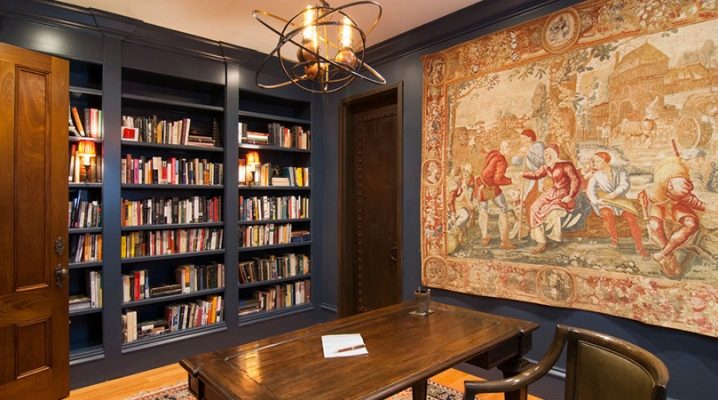
Tapestry is an unusual detail that you will not find in every room. These textile wall paintings are further proof that fashion is cyclical, and that what was popular in the distant 18th century can find new life even now. At the same time, such an original stylistic solution will look no worse in a modern apartment than in an old castle.
In this article, you will learn all about tapestries and understand how you can use such a piece of art to decorate your own home.



What it is?
To begin with, it is worth answering the question of what the tapestry is and when it appeared. Tapestries are woven paintings that depict various landscapes, historical scenes, or other sumptuous images.
It is known that the first tapestries appeared in ancient Egypt. Then they were used in order to capture some important historical moments. Later, a similar technique was used in France and Switzerland. It was the French tapestries that were considered the most luxurious. It was they who were considered not just a wall decoration, but a real work of art that deserves special attention.
Over time, such tapestries spread throughout the world and became a real decoration of luxurious castles and royal residences.

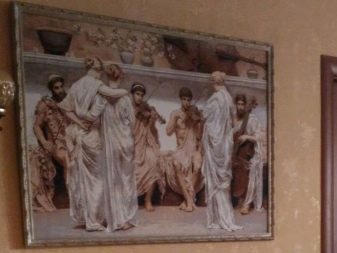
Today tapestries are popular again. They are great for decorating houses and apartments in different styles. Luxurious massive tapestry will help convey the spirit of another country and create a mysterious atmosphere in the room.
In addition, tapestries, especially large ones, are capable of dampening sounds, which is also important in apartments with thin walls and poor sound insulation. These characteristics make it very practical in everyday life. The technique of creating tapestries is still quite complex, which justifies the high price of the products. In addition, now rugs, handbags and even outfits are sewn from tapestry.

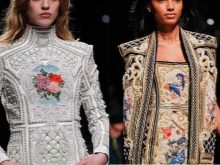

Varieties
Nowadays, tapestries are called not only antique works of art, but also stylized carpets. Let's take a look at what are the main differences between classic tapestries and models created using a similar technique.
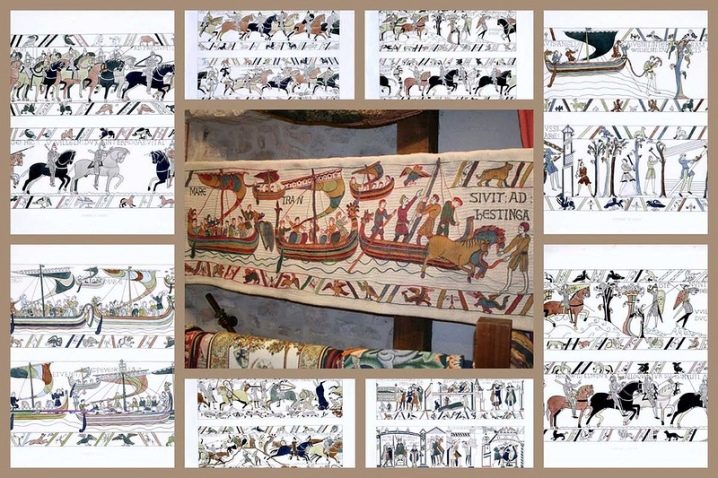
Smooth
Wall hangings are a trend that is long gone. But stylish tapestries, on the contrary, are gaining popularity. The simplest option is smooth models without a relief pattern and additional volumetric decor. Such tapestry carpets are created using traditional techniques. They can be safely hung on the wall or laid on the floor, depending on your aesthetic preference.
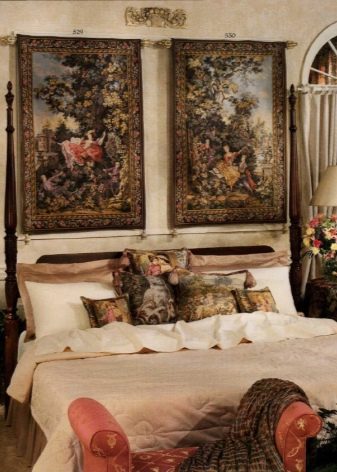
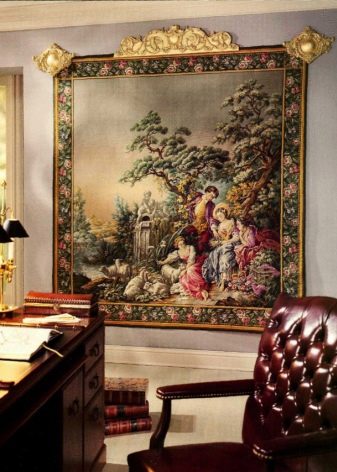
Textured
A slightly more complex version of tapestries is textured products. In this case, the product is created according to the traditional technique, and only then is it decorated with convex stitches. This allows you to create a relief canvas that is attractive not only because of its appearance, but also to the touch.
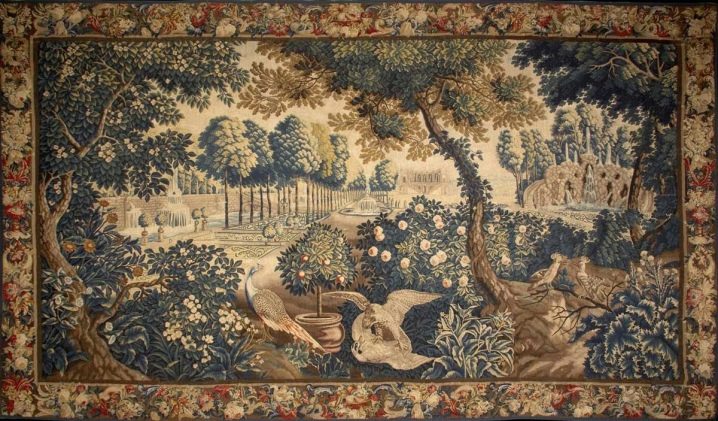
Tiered
Such a combined model is also very interesting externally. Several techniques are combined here. For example, a crocheted rug can be complemented with delicate embroidery or fringe around the edges.
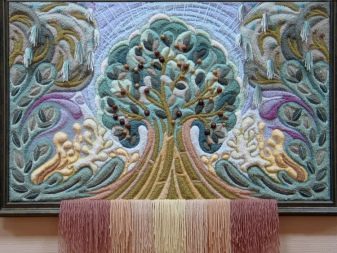

Non-woven
This is one of the most interesting options for creating tapestries. Such paintings are made of fabric, but using different techniques. Most often, such tapestries are created using embroidery, knitting or applique.
There are now many interesting tapestry options, both large and small. Therefore, you can safely choose a beautiful decorative attribute, regardless of whether you need a vintage and truly antique product or just a stylish decorative element without any history that it would keep.
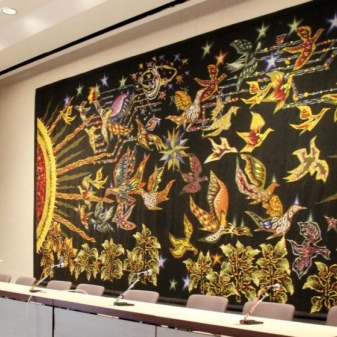

Selection Tips
Choosing a beautiful and truly high quality tapestry can be really tricky if this is your first time.
It should be borne in mind that tapestry canvases, unlike obsolete massive carpets, can be hung in almost any room. Tapestry can decorate a bedroom, living room, study, children's room and even a kitchen. The only exception will be a bathroom and a cold balcony room, where it is simply impossible to create suitable conditions for it.
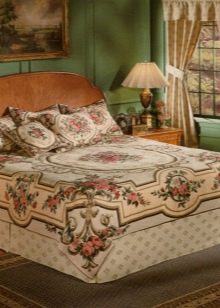
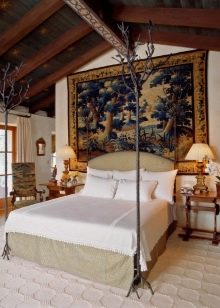
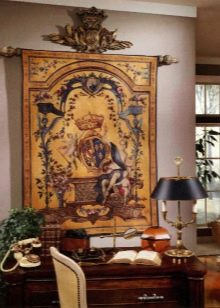
One of the most important rules for choosing a tapestry is that it is not too bright and matches the color with the rest of the interior details.
In general, a tapestry is a beautiful art object that should only unite different parts of the room. To avoid busting with decor, the tapestry should be the only decorative element in the room, especially if it is small. It is not advised to hang any additional paintings on the wall next to the canvas.
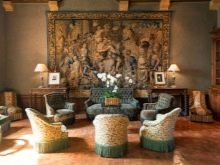
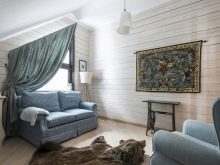

The subject of the image should be chosen based on the style in which the room is decorated. It is logical to hang some cute pictures in the children's room, perhaps scenes from famous fairy tales, captured on canvas.
Also highly valued are products that depict different landscapes, historical scenes or reproductions of famous paintings. Such beautiful tapestries may well be an excellent holiday gift for a connoisseur of such works of art. Many will also like the small size tapestry depicting heraldic symbols or attributes associated with a particular country.
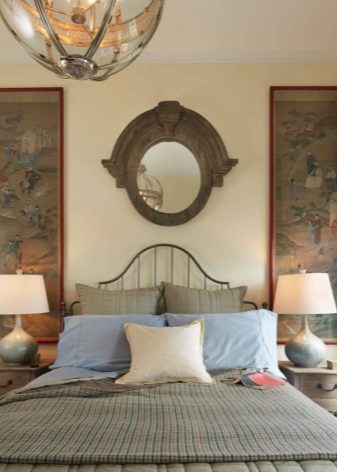

By the way, it will be interesting to look at the combination of the tapestry with other similar elements, for example, with a bedspread or pillows made of the same fabric or decorated with similar patterns.
When choosing a suitable canvas, attention should be paid to the dimensions. As already mentioned, the smaller the room itself, the more compact the picture should be.
Otherwise, you will get a very unpleasant effect - the tapestry will "eat up" all the free space and make it visually smaller. In a large room, a small tapestry, on the contrary, will be lost against the background of empty walls.
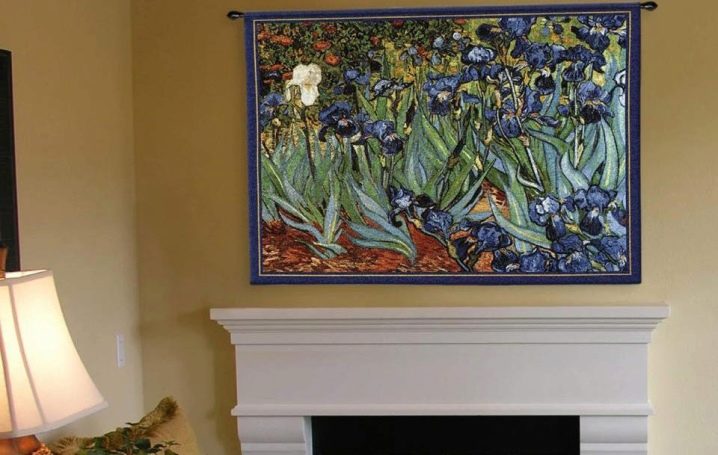
Materials (edit)
While it seems to many buyers that all tapestries are alike and are created from the same material, this is actually not the case. Tapestries are most often made from high density fabrics, and this is the main thing that unites them. Most often, when creating tapestry, modern manufacturers prefer fabrics such as jacquard.
This material has a dense texture, in addition, it is easy to apply the desired images to it.
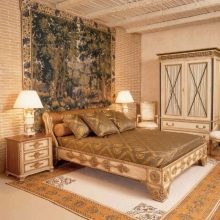
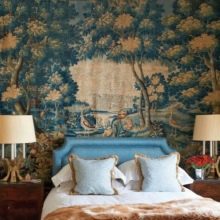
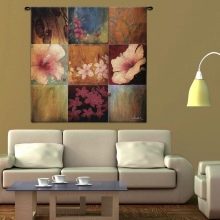
Less commonly, you can find thin cotton or dense woolen or terry tapestry. But even such products have certain advantages. For example, warm wool has properties such as heat and sound insulation, while cotton is suitable for light rooms.
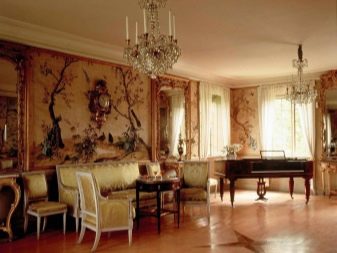
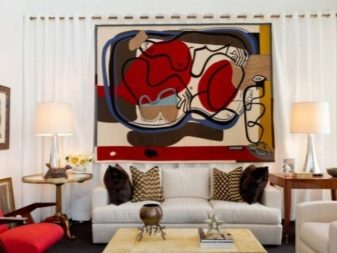
Design
Not only the material from which the tapestry is made differs, but also the patterns that adorn it. Let's take a look at the most popular and common motives.
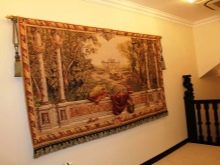
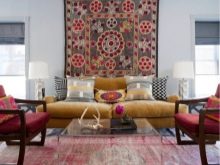

Antique paintings
For the collector and lover of antiques, there is no better find than a stylish tapestry that adorns a reproduction of an old painting, especially if it is a handmade piece.The most popular themes are the image of the hunt (the royal hunt is especially widespread), balls and receptions, where ladies are portrayed in luxurious dresses and surrounded by beautiful things.
Such a picture will perfectly fit into a library or home office, stylized in antique style. The same applies to large maps of the world with a huge amount of small details and images of different castles and other ancient buildings. For example, a white castle towering on a hill by the sea is one of the paintings that will surely delight the art connoisseur.
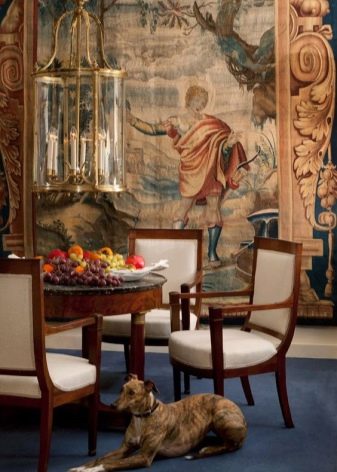
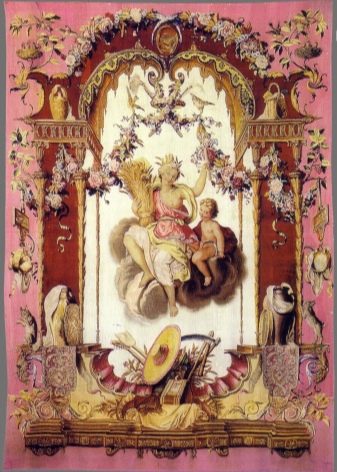
Landscapes
Another popular genre is landscapes. Here you can find almost anything - from a scattering of roses all over the canvas to the image of a small Provence-style village. The Garden of Eden or the image of a spreading tree against the background of sunsets is an excellent option for decorating a bedroom or living room in any style. All kinds of peonies, roses, sunflowers and other flowers will definitely appeal to girls and romantic natures who appreciate beauty.
Images of animals deserve special attention. Cute cats or puppies always cause affection for both adults and kids. And a picture with red deer is quite suitable to decorate even a private office with it.
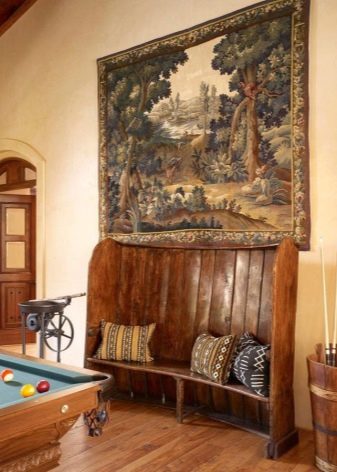

Household topics
The tapestry "home" implies the image of simple and familiar paintings: it can be a family scene, a lunch or a bouquet of poppies on the table, fishing or a family dinner. Such a decorative element will add coziness to the room and will definitely delight you for a long time.
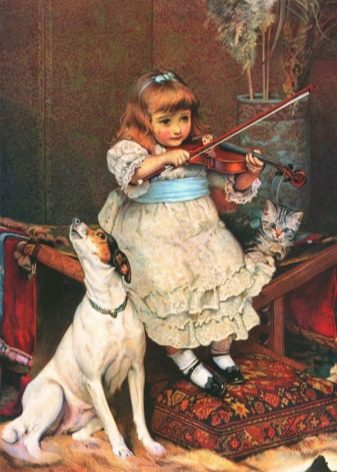

Abstract
A completely different genre - incomprehensible and non-standard paintings, which are called abstract art. Unlike classics, abstract art is by no means always intelligible pictures. Tapestry in this style may well be a simple combination of vibrant colors. Red, blue and green shades are intertwined in such a way that it is difficult to understand exactly what the author wanted to say. But at the same time, this is what fascinates.
By the way, among such canvases you can find reproductions of paintings by famous impressionists and abstractionists, which will definitely revive your interior and emphasize the good taste of the inhabitant of the apartment.
These are the main types of finishes, although, of course, other options for images can be found. For example, nowadays, practical tapestries with a calendar or an image of a family tree are especially popular. And for the nursery, you can pick up a picture with characters from anime or pages of your favorite book.
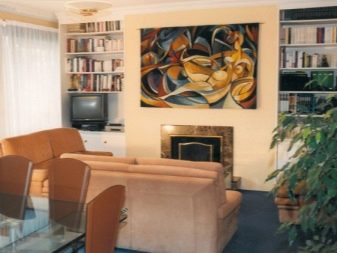
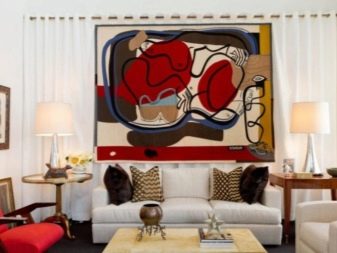
The main types of weaving
Most often, tapestries are created using a loom. The essence of hand weaving is that the threads are intertwined. There are several different techniques, and depending on which one you choose, you can get different results. By the way, it is quite possible to create machines for creating tapestries with your own hands, if you have experience in working with wood.
Before proceeding to weaving tapestry, you need to choose a suitable pattern and transfer it to a workpiece consisting of threads stretched on a machine. When such a peculiar sketch is ready, you can proceed to embodying it in color.
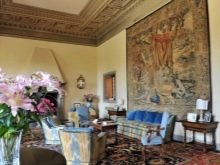
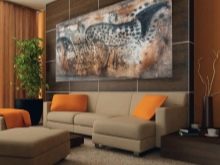
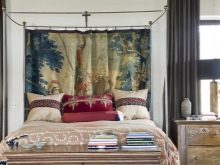
Oblique lines
As a rule, in one tapestry several types of different weaves are combined at once. This allows you to get the images you want and combine flat details with embossed ones. Slanted lines are where strands of two colors come together in one place.
This type of weave is used wherever you want to give the image a roundness or make it curved.
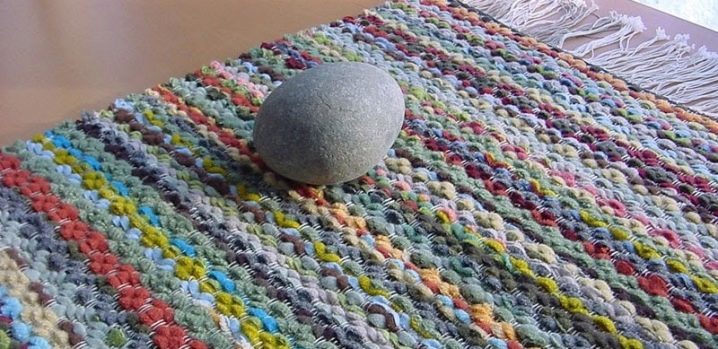
Circular technique
The circular technique, according to the masters, is not so common. However, it is also interesting in terms of what result is obtained in the end. In this case, threads of different colors go in a circle, and the finished image seems to be a work of art, drawn with wide and confident brush strokes. It looks really impressive and beautiful.
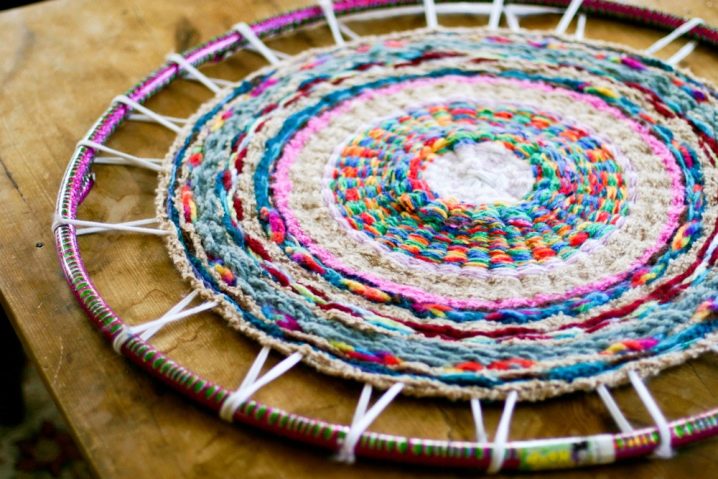
Contouring technique
As the name suggests, this technique is used to emphasize the outline of an object. For this, as a rule, denser threads are used than in the warp. If you use this technique, the drawing is clearer and more detailed.
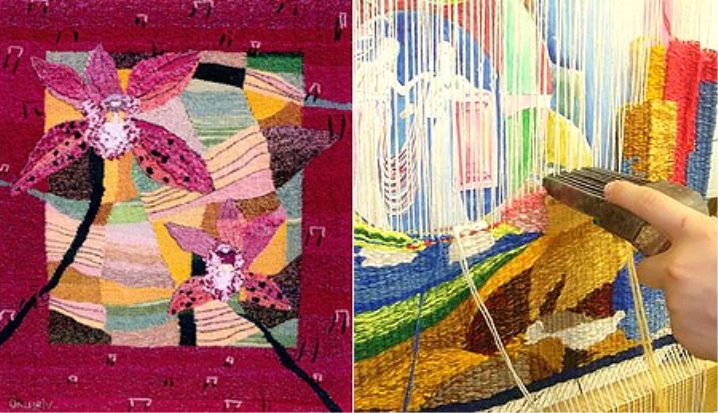
Decorative harnesses
Decorative flagella are what can add additional attractiveness to the finished work. With the help of bundles, the base of the thread is twisted in certain places. Most often, this technique is used for edging individual fragments or focusing on parts of a tapestry.
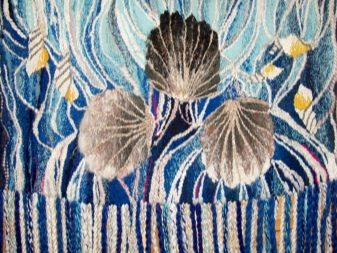
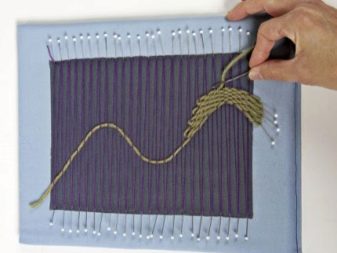
Additional decor
In addition to the basis of weaving, you also need to remember about additional decorative elements. Feathers, beads and other details are used to decorate the tapestry. Sometimes even stems of herbs and dried flowers are woven into the finished pattern. This makes the picture more complete and embossed.

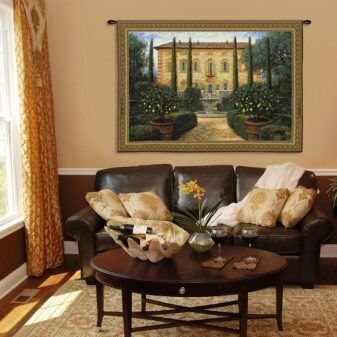
Manufacturers and reviews
When tapestries first appeared, the most popular products were those created by French masters. Now everything has changed a little and quality tapestry products are produced all over the world. French, Italian and Belgian products are very popular.
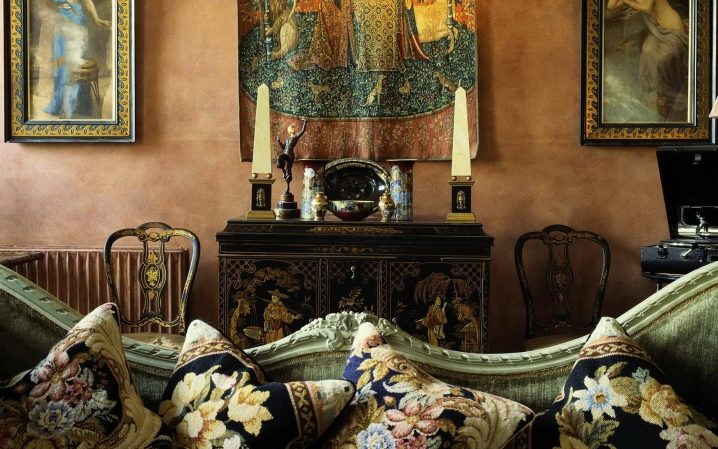
Of the domestic products, the products of the Ivanovo factories are especially popular. They both look beautiful and are quite unpretentious in operation. Traditional Russian motives, which cannot be found among tapestries from foreign manufacturers, are also pleasantly pleasing.
It is the domestic tapestries that have earned a reputation for quality and inexpensive. They are easy to clean, look good for many years, and at the same time, you do not have to spend a huge amount to buy this decorative element for your home or apartment. This means that even a person with an average salary can afford such a luxury.
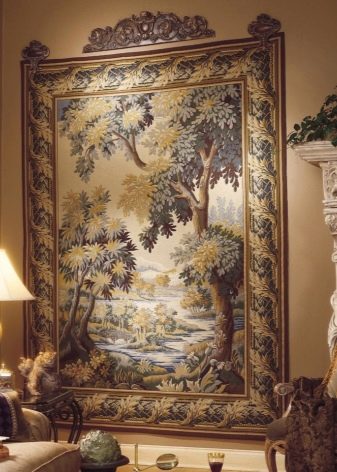
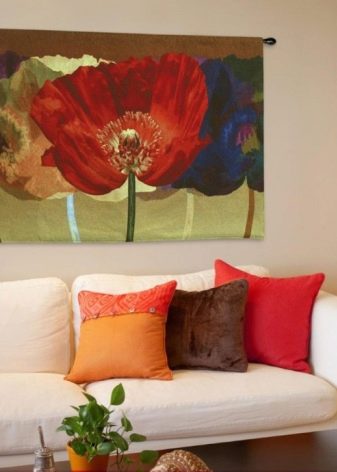
Place in the interior
Finally, it should be said about how to use tapestries to decorate any of the rooms. After all, the overall impression will depend on how appropriate it will be in the interior and how well the picture will fit into it. Even the most expensive canvas will seem superfluous and inappropriate if chosen incorrectly. This means that your money will be wasted.
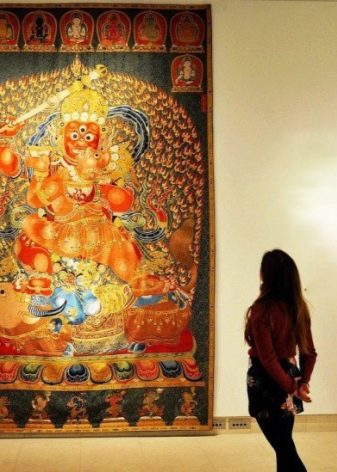
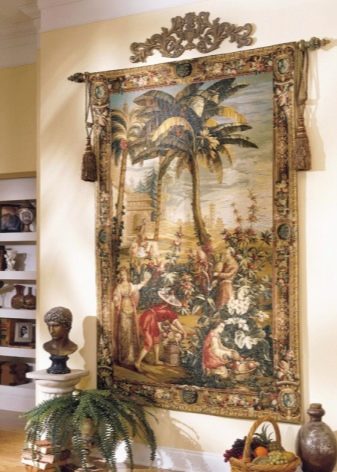
Use instead of wallpaper
Beautiful and large tapestries can easily be used instead of wallpaper if you have a small room. Most often, one of the walls is decorated in this way. This is more profitable and much more interesting than just gluing wallpaper around the entire perimeter of the room. Dense tapestry is a great way to insulate a room and create excellent sound insulation.
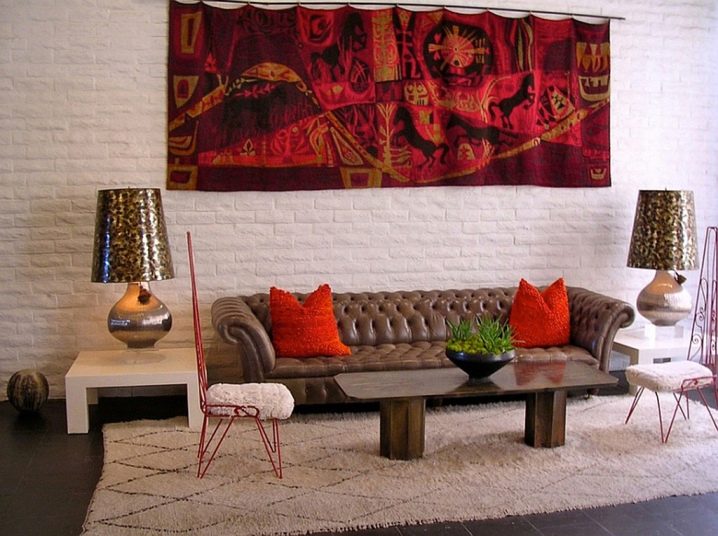
In the bedroom
A beautiful tapestry can be safely hung in any of the bedrooms. This can be a children's room or a room where adults rest. Here, by definition, everything depends on which picture is applied to the fabric. For example, in the nursery it is most logical to use cute cartoon or fairy-tale images, and in the bedroom of a married couple - landscapes or romantic pictures.
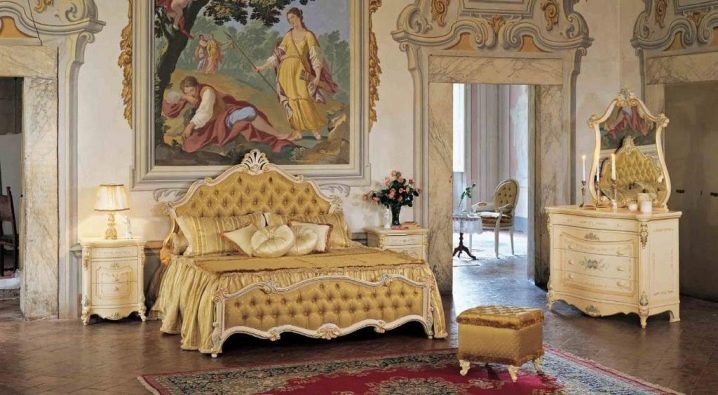
In an office or library
Another tapestry room that deserves attention is the home office or library. A beautiful old vintage tapestry is a luxurious addition to any cabinet. Restrained pastel colors, antique patterns and other beautiful details will be appropriate here.
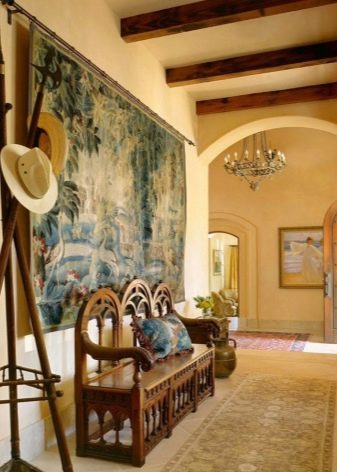
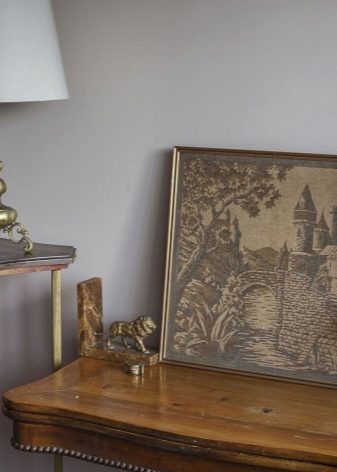
In a country house
The use of tapestries in country houses or in the country deserves special attention. It is in such conditions that they look the most organic. Here, old or antique stylized canvases with images of nobility, royal hunting or architectural works of art will just be appropriate. With a beautiful and correctly selected tapestry, even the simplest summer cottage will become much better and more comfortable. And of course, do not forget how well the tapestries insulate the walls. This means that with a luxurious canvas, it will be much easier for you to survive the cold winter.

Choose a tapestry that matches all interior features in color and style. The product should match the color of other fabric items such as curtains, blankets, rugs, pillows or other textiles. So you can create a harmonious and thoughtful interior that will look much more original than any simple room in a standard design solution.

If earlier tapestries were used to decorate the houses of the nobility or other luxurious premises, now almost anyone can safely decorate their premises with such a product. Choose a modern tapestry that suits your style and mood, or buy a luxurious antique product, and your interior will "come to life" and sparkle with new colors.

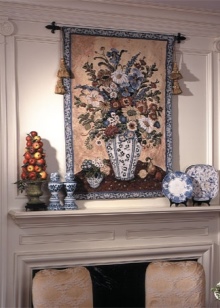
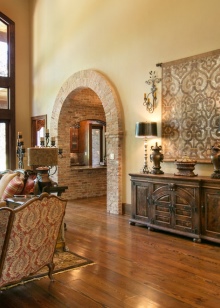
You will learn more about how to decorate the interior with tapestry in the following video.













The comment was sent successfully.